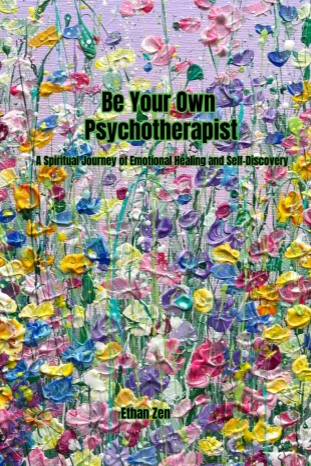The Physiological Mechanism of Meditation in Regulating Emotions
Three main sources of emotional responses:
- Emotional responses triggered by physical discomfort: Negative emotions such as tension, anxiety, and sadness arise when the body experiences pain, injury, or threats of harm.
- Emotional responses triggered by mental discomfort: Negative emotions like anger, fear, and sadness occur when one faces threats to survival or reproduction, such as when a loved one is in danger or when one’s status in family, group, or society is threatened.
- Emotional responses triggered by cognitive biases: Negative emotions can arise from misinterpreting internal or external stimuli. The human brain is defensive by nature, often interpreting environmental information pessimistically to ensure maximum safety. This tendency, developed through evolution when humans constantly faced threats from predators or other humans, is less necessary in modern society, where physical safety is generally secure. However, this defensive brain now leads to more negative emotions, stress, and suffering.
The physiological mechanism of emotional responses:
When the brain interprets emotionally charged stimuli, we may experience faster breathing, a racing heartbeat, cold limbs, slight sweating, and trembling. These sensations indicate that the body is preparing for “fight or flight”—either to flee in terror or to fight in anger. This “fight or flight” mechanism, evolved in the brain, drives us toward goals with emotions like anger or enthusiasm or away from threats with emotions like fear or sadness. Whether the emotions are positive or negative, they trigger similar physiological responses. Research shows that the body’s reaction to joy and fear is almost identical.
The physiological reaction to emotions is a decision-making system operating at the subconscious level, directly influencing emotional expression and behavior. The intensity of emotional reactions determines how strongly we express and act upon them—the stronger the reaction, the more intense the expression and behavior. Uncontrolled emotional expression can lead to several problems: it can evoke negative reactions from others, further intensifying the brain’s emotional center, the amygdala, creating a vicious cycle. Over time, we may lose rationality, becoming controlled by emotions, leading to irrational behavior. This state corresponds to the “greed, anger, and ignorance” mentioned in Buddhist teachings, which are seen as the root of all suffering.

How meditation addresses emotional regulation at its core:
By understanding the physiological mechanism of emotional responses, we can target two key points in the process to regulate emotions.
- The first point is the initial activation of the amygdala by environmental stimuli:
When the brain’s hippocampus is activated, it can effectively inhibit the activity of the amygdala, acting as a brake system. The prefrontal cortex also plays a role in regulating amygdala activity. Numerous psychological studies show that mindfulness meditation enhances the control ability of the prefrontal cortex, activates the hippocampus, and modulates the amygdala, keeping the emotional areas of the brain in a balanced state.This means that regular mindfulness meditation can reshape the brain’s structure, altering one’s emotional state from a physiological perspective. The resulting emotional state is one of calm, serenity, moderate enthusiasm, balanced energy, and healthy passion. In this state, both the sympathetic and parasympathetic nervous systems remain appropriately active, allowing individuals to respond to environmental stimuli with suitable physiological reactions. Since physiological responses to emotions influence how we interpret stimuli, in this state, we are more likely to interpret situations in a positive and optimistic way.While the brain is naturally defensive, long-term mindfulness meditation can transform it into a proactive, approach-oriented brain. This shift leads to greater feelings of safety, more enthusiasm for approaching goals, and a more optimistic outlook. This peaceful and stable state of mind is what the ancient Chinese text, The Great Learning, refers to as “tranquility,” and what the Buddhist Eightfold Path calls “right concentration” (samadhi). Meditation can permanently reshape the brain structure into one that embodies this tranquility or right concentration. Viewing the world from this state, we perceive a completely different reality, one that is accurate and grounded in a correct worldview.
- The second point is the expression of emotions:
While emotions need to be expressed, all emotions should be controlled and expressed appropriately rather than randomly. Uncontrolled emotional expression can further intensify emotional reactions, creating a vicious cycle. Consistent mindfulness meditation helps us become aware of our emotional states in real time, leading to appropriate and controlled emotional expression, preventing outbursts and negative cycles.

The Four Stages from Ignorance to Enlightenment:
- Ignorance stage: Not knowing that one does not know.
- Awakening stage: Realizing that one does not know.
- Practice stage: Knowing that one knows.
- Enlightenment stage: Not knowing that one knows.
In practice, everyone goes through these four stages. The second stage is often the most challenging, where people tend to feel discouraged and want to give up. However, with persistent practice, we can overcome the suffering caused by greed, anger, and ignorance—the “three poisons”—and reach a state of happiness, love, and wisdom.







